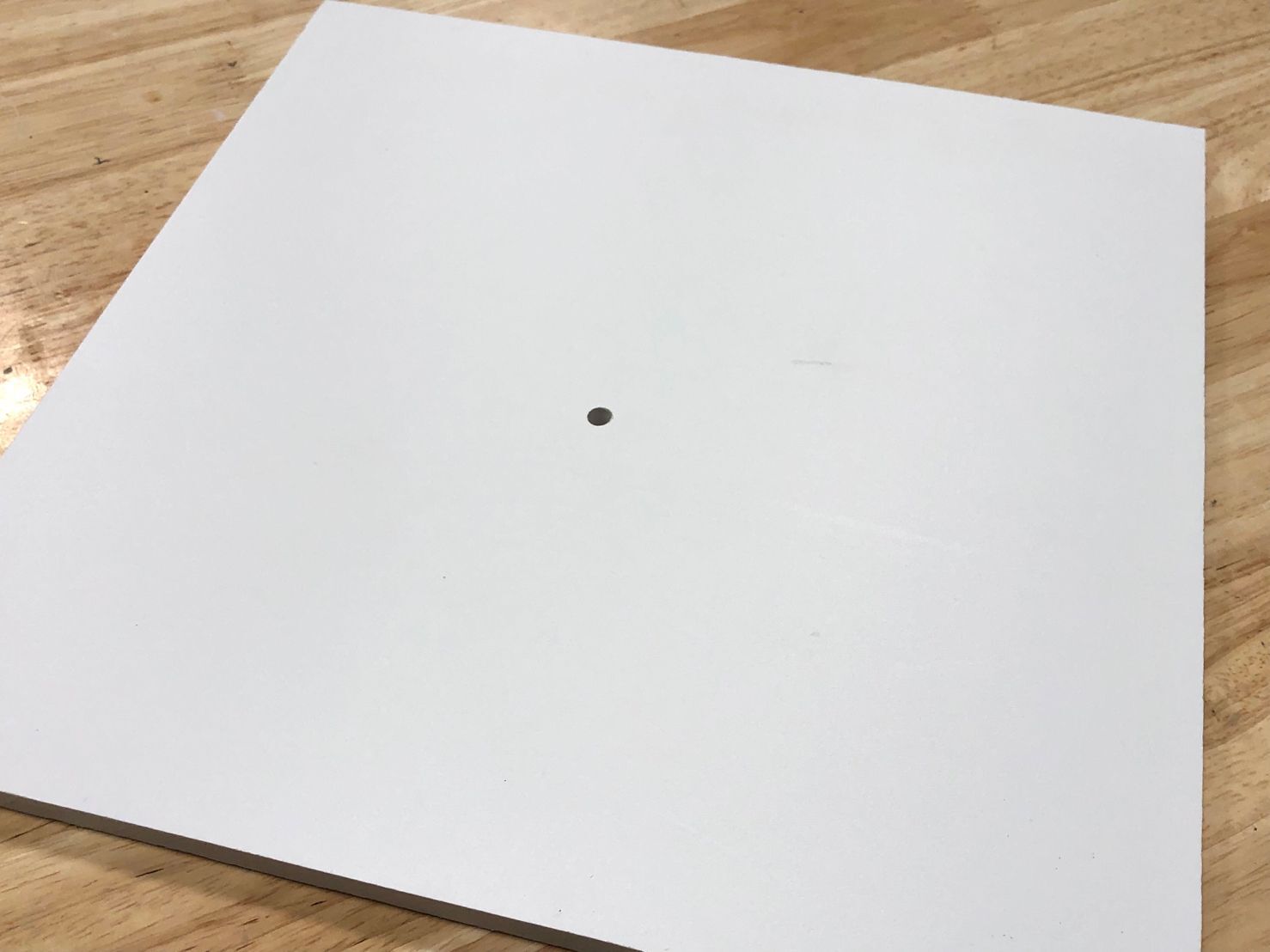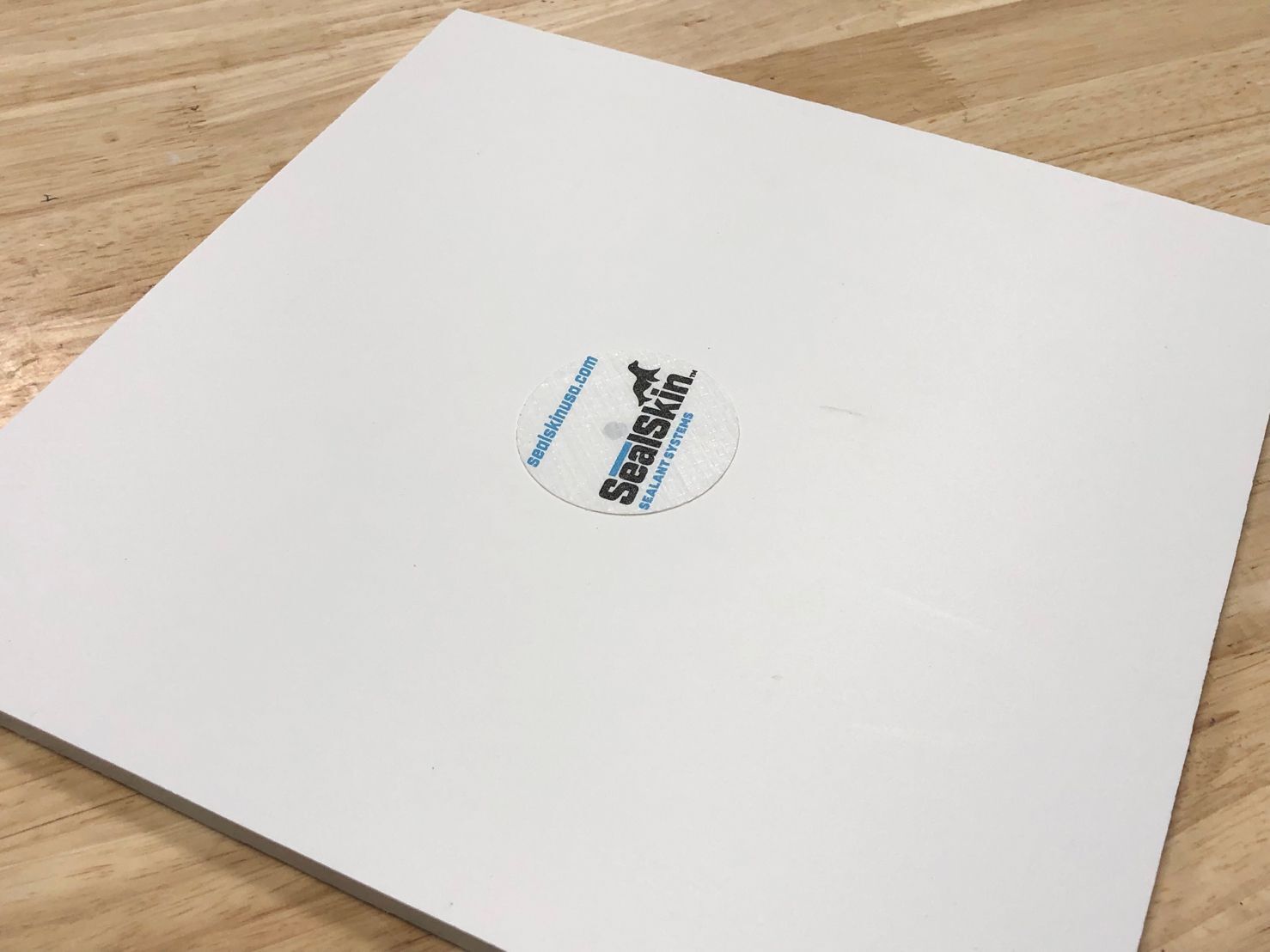Tags: #buildingenclosures #buildingenvelopes #buildingmaterials #buildingproducts #buildingscience #materialsscience #roguetesting #tape




A simple method for assessing edge-sealing of tapes and self adhered flashing.
Post-immersion peel adhesion per AAMA 711 is not necessarily a good indicator of a tape’s ability to seal at edges – arguably its prime directive. I’ve used this simple method to evaluate edge sealing of Sustant USA’s recently introduced fastener patch. It’s also effective as a general edge sealing test for tapes and adhered flashing.
The apparatus consists of a selected substrate configured with a pre-drilled 1/4” hole or slot. The tape specimen is then applied directly over the fault condition and allowed to set for 24 hours. Specimens may be cut in any preferred size and geometry as long as they achieve a minimum uniform edge distance.
The prepared test specimen is then integrated into a vertical hydrostatic column having a desired diameter and height. I typically use a height of 21.6” which is consistent with hydrostatic testing of many WRBs.
It is important to chair the test assembly a minimum of two inches above the floor or benchtop. This assists in monitoring without disturbing the apparatus.
Test durations are based on preferred rigor and substrate type. A five-hour test at 21.6” represents minimum criteria. I prefer longer durations such as 24 hours, 7 days, or even 30 days. Alternatively, I test to failure.

